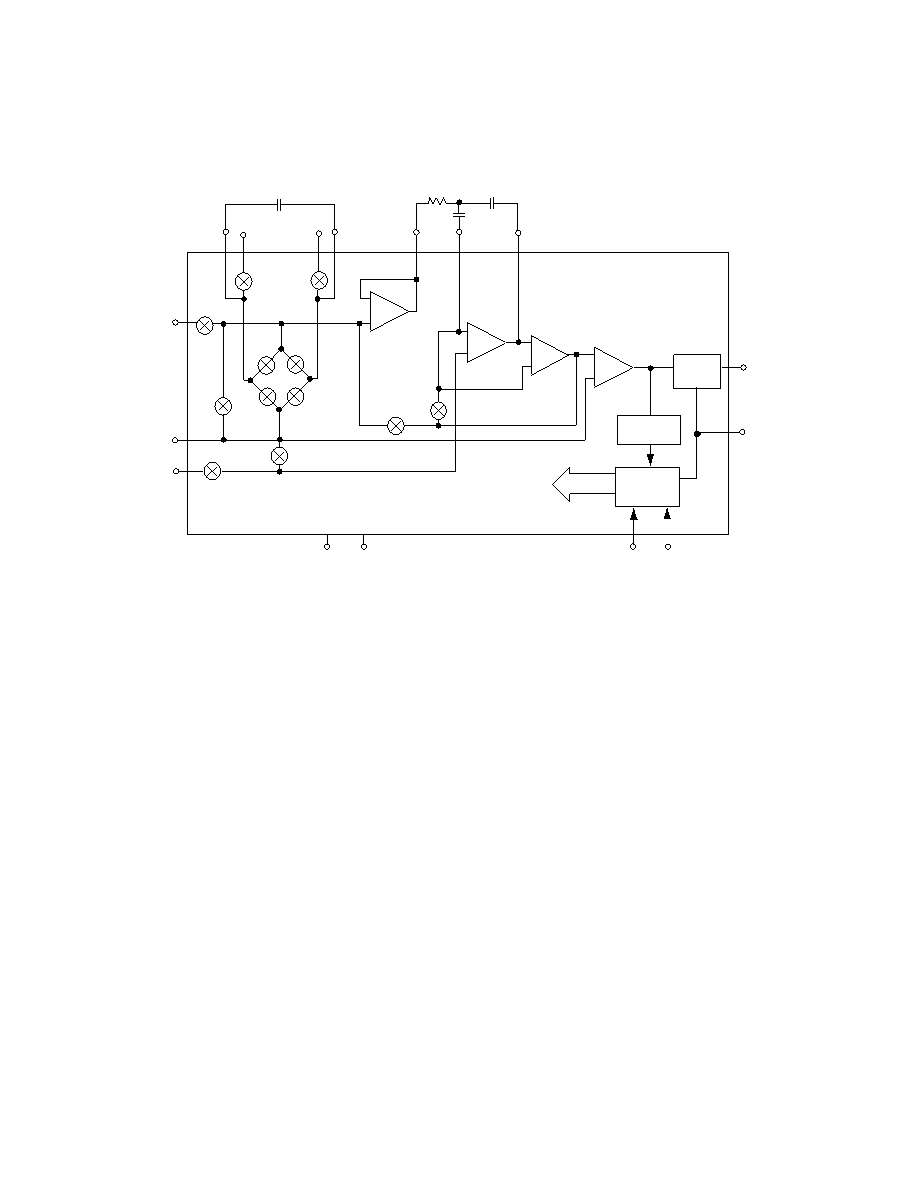- 您現在的位置:買賣IC網 > PDF目錄10018 > ALD500SCL (Advanced Linear Devices Inc)IC ADC 16BIT DUAL 16SOIC PDF資料下載
參數資料
| 型號: | ALD500SCL |
| 廠商: | Advanced Linear Devices Inc |
| 文件頁數: | 4/11頁 |
| 文件大小: | 0K |
| 描述: | IC ADC 16BIT DUAL 16SOIC |
| 標準包裝: | 48 |
| 位數: | 16 |
| 轉換器數目: | 1 |
| 功率耗散(最大): | 10mW |
| 電壓電源: | 雙 ± |
| 工作溫度: | 0°C ~ 70°C |
| 安裝類型: | 表面貼裝 |
| 封裝/外殼: | 16-SOIC(0.154",3.90mm 寬) |
| 供應商設備封裝: | 16-SOIC |
| 包裝: | 管件 |
| 輸入數目和類型: | * |

2
Advanced Linear Devices
ALD500AU/ALD500A/ALD500
GENERAL THEORY OF OPERATION
Dual-Slope Conversion Principles of Operation
The basic principle of dual-slope integrating analog to digital
converter is simple and straightforward. A capacitor, CINT, is
charged with the integrator from a starting voltage, VX, for a
fixed period of time at a rate determined by the value of an
unknown input voltage, which is the subject of measurement.
Then the capacitor is discharged at a fixed rate, based on an
external reference voltage, back to VX where the discharge
time, or deintegration time, is measured precisely. Both the
integration time and deintegration time are measured by a
digital counter controlled by a crystal oscillator. It can be
demonstrated that the unknown input voltage is determined
by the ratio of the deintegration time and integration time, and
is directly proportional to the magnitude of the external reference
voltage.
The major advantages of a dual-slope converter are:
a. Accuracy is not dependent on absolute values of
integration time tINT and deintegration time tDINT, but is
dependent on their relative ratios. Long-term clock frequency
variations will not affect the accuracy. A standard crystal
controlled clock running digital counters is adequate to generate
very high accuracies.
b. Accuracy is not dependent on the absolute values of
RINT and CINT. as long as the component values do not vary
through a conversion cycle, which typically lasts less than 1
second.
c. Offset voltage values of the analog components, such
as VX, are cancelled out and do not affect accuracy.
d. Accuracy of the system depends mainly on the accuracy
and the stability of the voltage reference value.
e. Very high resolution, high accuracy measurements
can be achieved simply and at very low cost.
An inherent benefit of the dual slope converter system is noise
immunity. The input noise spikes are integrated (averaged to
near zero) during the integration periods. Integrating ADCs
are immune to the large conversion errors that plague
successive approximation converters and other high resolution
converters and perform very well in high-noise environments.
The slow conversion speed of the integrating converter provides
inherent noise rejection with at least a 20dB/decade attenuation
rate. Interference signals with frequencies at integral multiples
of the integration period are, theoretically, completely removed.
Integrating converters often establish the integration period to
reject 50/60Hz line frequency interference signals.
The relationship of the integrate and deintegrate (charge
and discharge) of the integrating capacitor values are
shown below:
VINT = VX - (VIN . tINT / RINT . CINT)
FIGURE 1. ALD 500 Functional Block Diagram
SW-R
-
+
-
+
-
+
-
(1)
(14)
(15)
COUT
DGND
Level
Shift
Polarity
Detection
Phase
Decoding
Logic
Comp2
Comp1
Integrator
Buffer
Analog
Switch
Control
Signals
Control Logic
A
B
AGND
(10)
(5)
(11)
(7)
(9)
(8)
(6)
(4)
(2)
(16)
(13)
(12)
VDD
VSS
CINT
RINT
CAZ
C-REF
SWAZ
SWS
SWR
CREF
SWAz
SWIN
SWG
SWIN
C+REF
V+REF V-REF
SW-R
SW+R
V-IN
V+IN
BUF
(3)
相關PDF資料 |
PDF描述 |
|---|---|
| VE-B63-IV-F1 | CONVERTER MOD DC/DC 24V 150W |
| IDT72V233L7-5BC | IC FIFO 1024X18 7-5NS 100BGA |
| VE-B62-IV-F4 | CONVERTER MOD DC/DC 15V 150W |
| VI-B21-MX-B1 | CONVERTER MOD DC/DC 12V 75W |
| VE-B62-IV-F3 | CONVERTER MOD DC/DC 15V 150W |
相關代理商/技術參數 |
參數描述 |
|---|---|
| ALD500SWC | 制造商:ALD 制造商全稱:Advanced Linear Devices 功能描述:PRECISION INTEGRATING ANALOG PROCESSOR |
| ALD500SWCL | 功能描述:模數轉換器 - ADC 16 Bit A/D Processor RoHS:否 制造商:Texas Instruments 通道數量:2 結構:Sigma-Delta 轉換速率:125 SPs to 8 KSPs 分辨率:24 bit 輸入類型:Differential 信噪比:107 dB 接口類型:SPI 工作電源電壓:1.7 V to 3.6 V, 2.7 V to 5.25 V 最大工作溫度:+ 85 C 安裝風格:SMD/SMT 封裝 / 箱體:VQFN-32 |
| ALD514012PJ134 | 制造商:TDK-Lambda Corporation 功能描述:DC-DC LED DRIVER, 12VDC, FIVE OUTPUT 0.15A - Bulk |
| ALD-514012PJ134 | 功能描述:DC/DC轉換器 12VDCin DC-DC LED Driver 5 Output .14A RoHS:否 制造商:Murata 產品: 輸出功率: 輸入電壓范圍:3.6 V to 5.5 V 輸入電壓(標稱): 輸出端數量:1 輸出電壓(通道 1):3.3 V 輸出電流(通道 1):600 mA 輸出電壓(通道 2): 輸出電流(通道 2): 安裝風格:SMD/SMT 封裝 / 箱體尺寸: |
| ALD521D | 制造商:ALD 制造商全稱:Advanced Linear Devices 功能描述:24 BIT SERIAL INTERFACE DIGITAL CONTROLLER |
發(fā)布緊急采購,3分鐘左右您將得到回復。